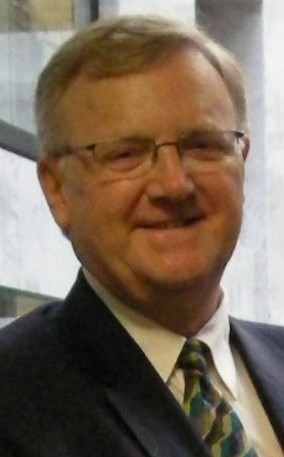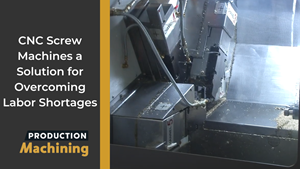5 Tips for Developing a Succession Plan for your Machining Business
These are not the typical tips you might get from an estate planner, attorney or business broker. Instead, they speak to the “soul of the business” and the legacy of the owner.
Share

As a consultant, I have worked with many family businesses that were formed after family members had been successful leaders at other companies. Their decisions to quit their jobs could have stemmed from any number of reasons, but was commonly because they had a better idea about “X.”
A past client, Jim, was a toolmaker in the fabrication shop of a large defense contractor. While there, he discovered another company in the area needed parts made for it. He bought a drill press, grinder and metal cutter, and put them in his basement. On his way home from work, he would pick up an order for parts, make them that evening, and then deliver them on his way to work the next morning.
Jim eventually quit his job to manage his new business full time. Almost at the same time, he began to consider which of his children might run the business after he retires. Jim’s son did not possess his talents, but his daughter, who studied engineering in college, was extremely interested in technology. She helped him implement ISO 9001 and other criteria to meet customer requirements. When I met Jim, he had just built a new building and purchased a new press. My role was to advise him on workforce development issues and continuous improvement processes. Jim still had another 10-15 years in running his business, but he was already thinking about succession planning.
From my experience of working with Jim, I began to form ideas that could help other owners who are ready to leave their businesses. These are not the typical tips you might get from an estate planner, attorney or business broker. Instead, they speak to the “soul of the business” and the legacy of the owner. Here are five.
1. Nurture the invitation. A family business is the family business. In Jim’s case, he was initially getting the orders and running the machines. As the orders grew, he hired people to help him. His wife was the first business manager ensuring people were paid and taxes were filed. Their children eventually became helpers in the business, too. In another machine business, Colburn Manufacturing, Scott Larson stepped out on his own in 1999 to create his CNC Swiss machine business. At the age of 10, his son, Clint, started cleaning parts for his dad’s customers. Clint went to St. Cloud Technical Community College and is now the company’s vice president of manufacturing in an operation that covers 15,000 square feet. Clint’s sister, Liz, is the director of operations.
2. Have a vision. When I met Scott and his wife Cheryl in 2017, they wanted to create a legacy for Colburn Manufacturing for the next 20 years. They already had a vision of preparing the company for transition to Clint and Liz. Within five years, Scott and Cheryl wanted to retire, and wanted enough growth within the business to fund their retirement.
3. Create an enterprise model for the business. Typically, in my consulting with the business owners, I help them further develop vision and mission, and identify their values that are always there but sometimes buried. I create an Enterprise Model — the business on a single page. The model begins with the “box” that houses the systems and processes that translate the inputs to the output products and services. The “box” sits on the foundation of organizational values which have sustained the business through changing economic storms.
4. Create and work a plan. Scott and Cheryl created a plan to invest in the necessary certifications, obtaining ISO 9001 and ISO 13485 to meet customer requirements. They purchased additional Swiss-type lathes as well as inspection and cleaning equipment. They also invested in training classes for Cheryl and Liz to grow the business, partnering with a local economic development agency.
5. Make one day at a habit. A business runs on a rhythm. Whenever I begin a consulting engagement, I conduct a business assessment and I find that communication is the number one obstacle to business rhythm. One of the greatest challenges of entrepreneurial people is managing the discipline of weekly meetings.
Gino Wichman has shown in his books, “Traction” and “Get a Grip” (with Mike Paton) the value of weekly management meetings to foster communication. Following Wickman’s Level 10 meeting agenda, the daily/weekly rhythm of the business becomes a habit. In addition, adopting some of Wickman’s Entrepreneurial Operating System (EOS) principles helped Scott and Cheryl work on the business rather than in the business. These steps helped them focus on their plan and progress toward their vision.
About the Author
Tom Huberty
Tom Huberty is the Chief Excellence and Encouragement Officer (CEEO) of Huberty Performance Learning LLC, located in Minneapolis, and author of “26.2 Tips to Win Your Business Marathon.” Tom can be reached at 612-801-2847 or tom@betterruncompany.com.
Related Content
Video Tech Brief: CNC Screw Machines a Solution for Overcoming Labor Shortages
CNC screw machines can exceed job shop productivity and enable manufacturers to overcome perpetual employment gaps.
Read More6 Tips for Training on a Swiss-Type Lathe
There are nuances to training a person to effectively operate a Swiss-type lathe. A shop I visited a while back offers some suggestions.
Read MoreSuccession Planning: Three 15-Minute Activities to Start Preparing for Tomorrow
Succession planning is planning for the future success of your business.
Read MoreEmerging Leader's Problem-Solving Skills Cool Down a Hot Project
This 2023 Emerging Leader developed a product in response to a call for help from Yamaha that was a huge hit in the snowmobile industry when it hit the market in 2010. In fact, it is now a common product that most snowmobile OEMs have implemented.
Read MoreRead Next
Seeing Automated Workpiece Measurement in Real Time
User-friendly inspection software for CNC machining centers was shown at IMTS 2024 monitoring measurements between and after machining while performing SPC based on recorded measurement values.
Read More


















